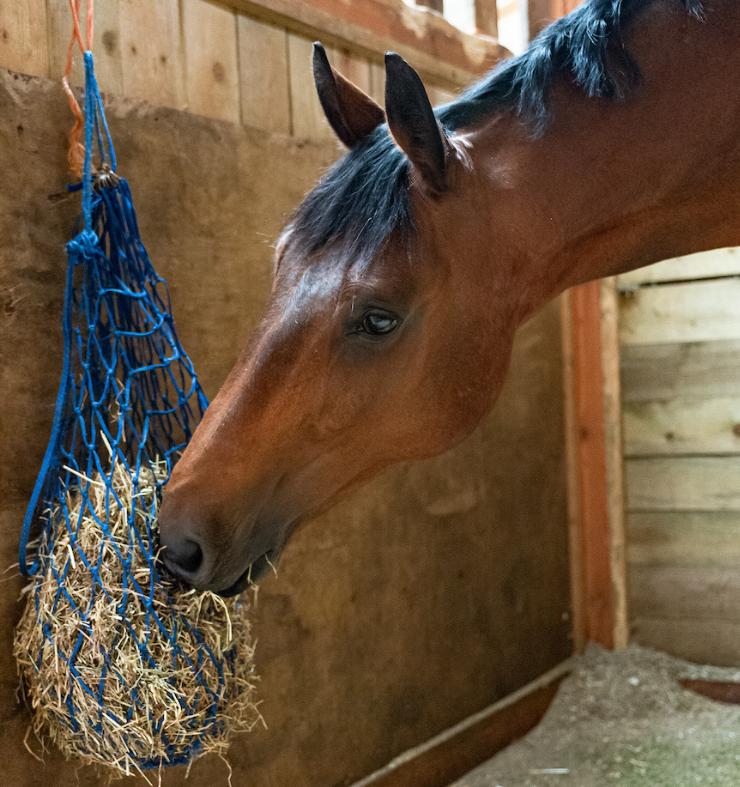Due to a continuous secretion of stomach acid, horses are more prone to Gastric Ulcers than many other animal species. Their susceptibility is increased if they go for long periods of time without eating or producing saliva as the levels of stomach acid will quickly increase both in volume and acidity.
When we’re considering the horses who suffer with Gastric Ulcers, we note that they are mainly stable kept, without free access to forage at all times. They are often also fed high-starch, high-sugar, high-energy feeds which can be a trigger of ulcers, especially if the feeding routine is not carefully managed.
In terms of managing horses prone to Gastric Ulcers, it is advisable to increase the amount of time they are chewing and producing saliva by increasing the number of meals that they’re having per day. At the same time, the size of the meals should decrease, to minimise the number of hours that the feed is spending in the stomach and therefore, the amount of acidity and fermentation that’s taking place.
When we’re considering the type of feed to choose, as well as volume and size, we can't forget consideration of starch. Starch delivery is usually recommended at 1 gram/per kilogram bodyweight per meal for horses prone to gastric ulcers, capping at 2 grams/per kilogram bodyweight per day. That needs to be worked out based on the energy requirement of the horse depending on what activity it’s doing. Feeds like D&H Elite Sport Muesli, ERS Cubes, Classic Fibre Cubes and Classic Fibre Mix are particularly useful because they’re high in fibre and oil, but really well balanced in terms of low starch and low sugar levels whilst maintaining optimal levels of protein. Elite Sport Muesli and ERS Cubes are also packed full of support supplements to aid the promotion of optimal health and nutrition of horses prone to gastric ulcers whilst in competitive work.
Once the above changes are enacted, the next thing to examine is fibre source. Easy ways to improve the overall quality of fibre being provided in the diet are to use quality complimentary products like those from D&H's Fibre Range. KwikBeet contains the super fibre sugar beet, in unmolassed form. It is therefore a higher energy fibre source in comparison to many other materials. Alfalfa is a key component to most horses’ diets with gastric ulcers because it has a high calcium content – D&H Alfalfa Oil Plus, Alfalfa and Fibre Fusion, and Fibergy all have alfalfa present, in various quantities. Fibergy is blended with oat straw helping to keep Its energy content lower for easy keepers, and Fibre Fusion is blended with several additional forages, including sainfoin. Blends of fibre sources have recently been shown to have promising benefits when implemented into the feeding plan of horses prone to gastric ulcers.
Our team of Nutritional Advisors are passionate about horses and are here to help, so if you need any advice or reassurance with your feeding regime, don’t hesitate to get in touch.




